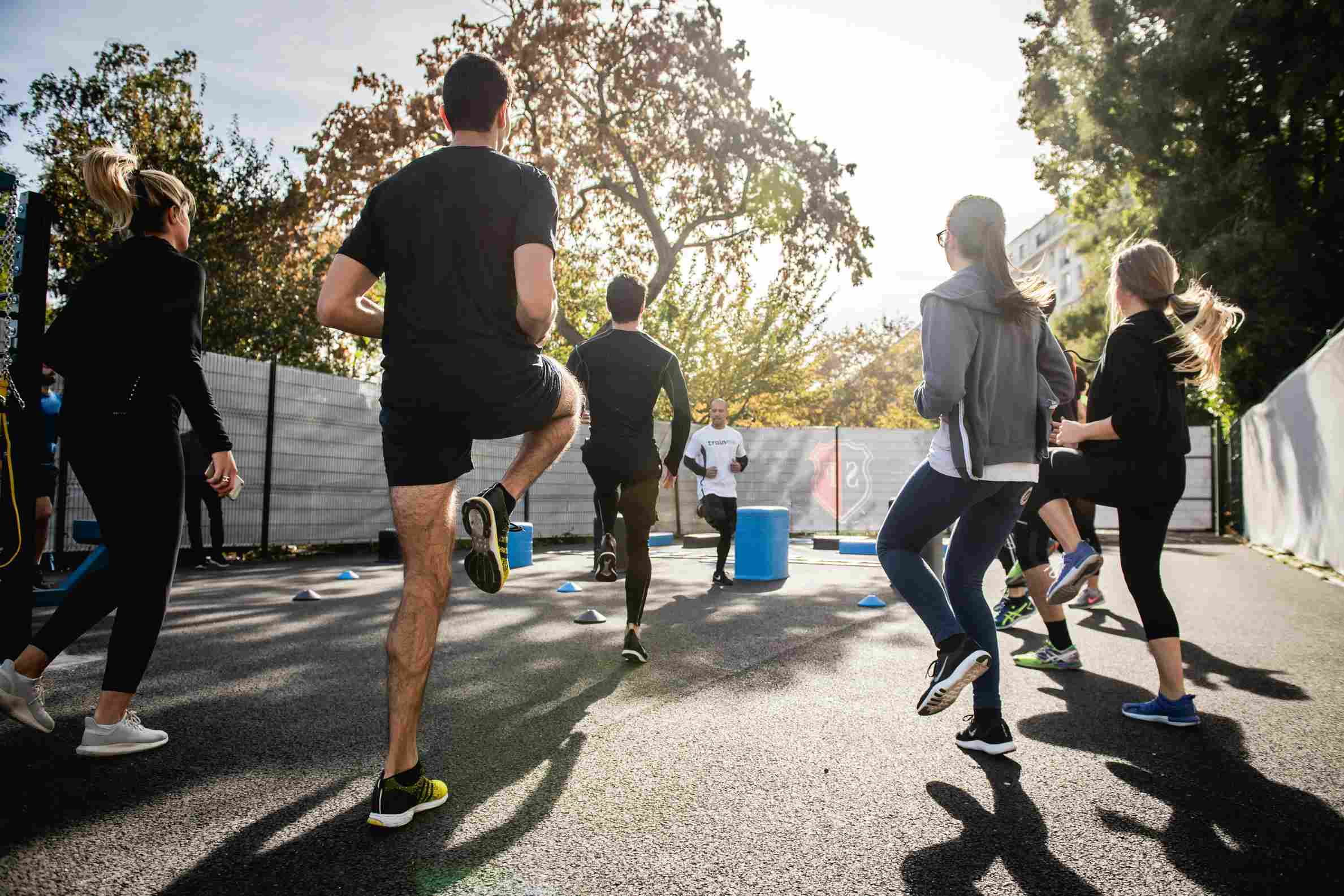
The Effects of Not Exercising and How to Overcome It
In today’s fast-paced world, busy schedules and various responsibilities can lead many people to skip exercising. However, not exercising can have significant impacts not just on physical health, but also on mental and emotional well-being. Are you in a toxic relationship with exercise? This article will explore the potential effects of not exercising in detail and provide effective strategies for overcoming this issue.
The Effects of Not Exercising on Physical Health
1. Weight Gain and Obesity Risk
Not exercising can slow down your metabolism and lead to weight gain. Regular physical activity supports calorie burning and helps with weight control. A lack of exercise can result in excess fat accumulation, increasing the risk of obesity. Obesity can lead to health issues such as diabetes, heart disease, and hypertension.
2. Negative Impact on Muscle and Bone Health
Exercise helps strengthen muscles and maintain bone health. Regular physical activity increases muscle mass and preserves bone density. Without exercise, you may experience muscle atrophy and bone loss. The risk of osteoporosis can increase with age, and not exercising can further heighten this risk.
3. Cardiovascular Health Issues
Exercise supports heart and vascular health, improves blood circulation, and regulates blood pressure. A lack of exercise can increase the risk of heart disease. A sedentary lifestyle can lead to high blood pressure, high cholesterol, and heart attacks.
4. Impact on the Immune System
Exercise strengthens the immune system. Physical activity boosts the number and effectiveness of immune cells, protecting the body from illnesses. Without exercise, the immune system can weaken, leading to more frequent illnesses.
The Effects of Not Exercising on Mental and Emotional Health
1. Increased Risk of Anxiety and Depression
Exercise releases endorphins and improves mood. Regular physical activity can alleviate symptoms of anxiety and depression. Not exercising can lead to mental health issues and decrease overall quality of life. A lack of exercise can increase stress and anxiety and heighten the risk of depression.
2. Sleep Problems
Exercise can improve sleep quality and help you fall asleep faster. Not exercising can negatively affect your sleep patterns and lead to insomnia. Poor sleep can result in decreased energy levels and overall health issues.
3. Cognitive Decline and Concentration Issues
Physical activity enhances brain function, mental clarity, and concentration. Without exercise, cognitive abilities may decline, and mental fatigue can increase. A lack of exercise can lead to memory problems and difficulty focusing.
The Effects of Not Exercising on Social Life and Quality of Life
1. Social Isolation
Exercise can provide opportunities for social interaction. Activities such as gym sessions, group classes, or outdoor events can help build social connections. Not exercising can lead to feelings of social isolation and increased loneliness.
2. Decreased Energy and Motivation
Exercise boosts energy levels and motivation. Not exercising can result in general fatigue and low motivation. This can lead to a lack of enthusiasm for daily tasks and activities, reducing overall quality of life.
3. Impact on Self-Satisfaction and Confidence
Exercise can enhance self-confidence and personal satisfaction. Not exercising can result in a loss of self-esteem and self-respect. The absence of physical activity can affect the sense of personal achievement and overall satisfaction.

Common Barriers to Exercise and Solutions
Overcoming Common Obstacles
Lack of Time:
In today’s fast-paced world, finding time to exercise can be challenging. To overcome this barrier:
Short, High-Intensity Workouts: Consider high-intensity interval training (HIIT) which can be effective in short periods, often as little as 15-30 minutes.
Integrate Activity into Daily Routines: Incorporate physical activity into your daily life, such as taking the stairs instead of the elevator, walking or biking to work, or even doing quick exercises during breaks at work.
Schedule Workouts: Treat exercise like any other important appointment by scheduling it into your calendar. Even short sessions can add up and make a difference.
Lack of Motivation
Maintaining motivation can be challenging, but there are strategies to help:
Set Achievable Goals: Establish clear, realistic goals, both short-term and long-term. For example, aim to exercise three times a week or increase your running distance gradually.
Track Progress: Use fitness apps or journals to track your progress. Seeing improvements can boost motivation.
Find a Workout Buddy: Exercising with a friend can provide accountability, make workouts more enjoyable, and help maintain motivation.
Lack of Knowledge:
Many people struggle with starting an exercise routine due to a lack of information:
Get Reliable Information: Look for reputable sources such as certified fitness trainers, online fitness platforms, or educational websites. Avoid relying on unverified sources.
Start Simple: Begin with basic exercises and gradually progress. Focus on learning proper form and technique to prevent injuries.
Use Resources: Explore online workout videos, apps, or fitness classes that offer structured plans and guidance.
Cost Concerns:
Exercise doesn’t have to be expensive. Here are budget-friendly options:
Bodyweight Exercises: These require no equipment and can be done anywhere. Examples include push-ups, squats, and planks.
Home Workouts: Invest in a few basic pieces of equipment like dumbbells or resistance bands, which are cost-effective and versatile.
Free Online Resources: Utilize free workout videos and fitness programs available on platforms like YouTube or fitness apps.
Strategies for Overcoming the Lack of Exercise
1. Start with Small Steps
Begin by incorporating small amounts of exercise into your routine. Start with short walks or light home exercises and gradually increase the duration of your workouts. Small successes can boost motivation and help develop a regular exercise habit.
2. Set Realistic Goals and Track Progress
Setting realistic and achievable goals can help in developing an exercise habit. Write down your goals and track your progress regularly. Personal goals can enhance exercise motivation and commitment.
3. Make Exercise Fun
Try different activities to make exercise more enjoyable. Options such as dancing, cycling, swimming, or group workouts can be fun. Making exercise enjoyable and social can increase the likelihood of maintaining a regular exercise routine.
4. Seek Social Support
Find an exercise partner or group to make physical activity more sustainable. Social support can enhance your desire to exercise and provide motivation. Exercising with family or friends can create a fun and supportive experience.
5. Incorporate Exercise into Your Daily Routine
Incorporate exercise into your daily schedule to ensure regular physical activity. Set specific times for exercise and stick to them. Making exercise a part of your routine can help you establish a sustainable workout habit.
6. Seek Professional Help
Working with a fitness expert or life coach can assist in developing exercise habits. Professional guidance can help you reach your personal goals and create an effective exercise plan. Additionally, health professionals can provide information about the potential effects of not exercising.
Psychological Strategies for Maintaining an Exercise Routine
Mindset and Motivation
Goal Setting:
Setting effective goals can drive consistent exercise habits:
SMART Goals: Ensure your goals are Specific, Measurable, Achievable, Relevant, and Time-bound. For example, aim to run 5 kilometers within 8 weeks.
Short-Term Goals: Break larger goals into smaller, manageable steps to maintain focus and motivation.
Positive Reinforcement: Rewarding yourself can reinforce positive behavior.
Celebrate Milestones: Recognize and celebrate achievements, whether it’s sticking to a routine for a month or reaching a fitness milestone.
Incentives: Use rewards as motivation, such as treating yourself to a new workout outfit or a relaxing activity.
Visualization Techniques:
Visualization can enhance motivation and adherence:
Create Mental Images: Visualize achieving your fitness goals, whether it’s completing a marathon or reaching a specific weight. This can help reinforce your commitment.
Positive Self-Talk: Use positive affirmations and encourage yourself through mental rehearsals of successful workouts and progress.
The Role of Nutrition in Exercise
How Nutrition Supports Physical Activity
Macronutrients and Exercise:
Proper nutrition is crucial for optimizing exercise performance and recovery:
Carbohydrates:
Provide the primary energy source for exercise. Include whole grains, fruits, and vegetables in your diet to fuel workouts.
Proteins:
Essential for muscle repair and growth. Incorporate sources like beans, and nuts to support recovery.
Fats:
Healthy fats, such as those from avocados, nuts, and olive oil, are important for overall health and can provide sustained energy.
Hydration:
Staying hydrated is key for peak performance and recovery:
Pre-Workout Hydration:
Drink water throughout the day and consider consuming a small amount of water or an electrolyte drink before exercising.
During Exercise:
Sip water regularly to maintain hydration, especially during intense or prolonged activities.
Post-Workout:
Rehydrate with water or an electrolyte drink to replace fluids lost during exercise.
Meal Timing:
Eating the right foods at the right times can enhance exercise performance and recovery:
Before Exercise:
Eat a balanced meal 1-2 hours before working out, including carbohydrates and a small amount of protein. A light snack 30 minutes before exercise can also help.
After Exercise:
Consume a meal or snack that includes both carbohydrates and protein within 30-60 minutes post-exercise to replenish glycogen stores and support muscle recovery.

The Importance of Rest and Recovery
Balancing Exercise with Rest
Rest Days:
The role of rest days is crucial for preventing overtraining and allowing the body to repair and become stronger:
Preventing Overtraining:
Rest days allow muscles to repair and energy stores to replenish. Without adequate rest, continuous exercise can increase the risk of injuries and reduce performance.
Muscle Repair:
Rest days are times when muscle fibers repair and strengthen. This process is necessary for muscle growth and overall fitness improvement.
Recovery Techniques:
Effective recovery techniques and tips include:
Stretching and Foam Rolling:
Use stretching and foam rolling to reduce post-exercise tension and soreness. These methods can help alleviate muscle tightness and discomfort.
Proper Sleep:
Quality sleep is essential for muscle recovery and overall healing. Getting sufficient sleep can accelerate recovery and improve performance.
Active Recovery:
Engage in light activities such as walking or low-intensity exercises to boost circulation and support recovery.
Listening to Your Body:
Advice on recognizing signs of overtraining and seeking medical advice:
Fatigue and Pain:
Persistent muscle soreness, fatigue, and pain that does not go away could be signs of overtraining. In such cases, prioritize rest and seek professional help if necessary.
Medical Consultation:
If you experience severe pain, injuries, or issues during recovery, consult a healthcare professional for proper evaluation and treatment.
Incorporating Exercise into a Busy Lifestyle
Practical Tips for Busy Individuals
Micro Workouts:
Short, frequent bouts of exercise throughout the day can be effective:
Daily Mini-Workouts:
Incorporate 5-10 minute exercise sessions throughout the day. This approach is practical for those with tight schedules and can contribute to overall fitness.
Various Options:
Perform simple exercises at work or home to maintain an active routine, such as desk exercises or short home workout routines.
Active Commuting:
Ways to integrate physical activity into your commute:
Biking or Walking:
Choose biking or walking to work instead of driving or taking public transport. This can increase daily physical activity and provide a more active form of commuting.
Parking Further Away:
Park your car farther from your destination to add extra walking time to your daily routine.
Family Activities:
Family-friendly activities that promote exercise and bonding:
Nature Walks:
Engage in family nature walks, which provide both exercise and quality time together.
Sports Games:
Play sports like basketball or volleyball with family members to make exercise fun and interactive.
Bike Rides:
Go on family bike rides, combining physical activity with enjoyable family time.

Conclusion
In conclusion, recognizing and addressing a toxic relationship with exercise is essential for achieving long-term physical and mental well-being. A toxic approach to exercise can lead to a host of negative consequences, including physical injuries, mental health struggles, and an overall diminished quality of life. It’s crucial to identify the signs of unhealthy exercise behaviors, such as obsessive routines, unrealistic goals, and using exercise as a means to cope with stress or negative emotions.
To cultivate a healthier relationship with exercise, it is important to focus on balance and moderation. This involves setting realistic, flexible goals, integrating adequate rest and recovery into your routine, and choosing physical activities that you genuinely enjoy. Embracing a variety of exercises and listening to your body’s needs can help prevent burnout and ensure that exercise enhances rather than detracts from your life.
If you find it challenging to navigate away from a toxic exercise pattern, seeking support from fitness professionals or mental health counselors can provide valuable insights and strategies. These experts can assist in developing a more balanced and enjoyable fitness routine, tailored to your individual needs and circumstances.
Ultimately, fostering a positive relationship with exercise requires a mindful approach that prioritizes health and happiness over perfection. By doing so, you can build a sustainable exercise routine that supports both your physical fitness and overall well-being.
Subscribe to our newsletter, follow us on social media to let us know how you’re working towards a balanced life!
Oral Health: Causes, Prevention, and the Role of Nutrition
Oral health is often a neglected part of our...
Food Allergies: Causes, Symptoms, and Management
Food allergies and sensitivities are...
Unintentional Weight Loss
Unintentional weight loss can be distressing,...
The Negative Impacts of Plastic Usage on Health and the Environment
Plastic has revolutionized modern life,...
The Impact of Social Media on Body Image: How It Affects Women’s Health
Social media has transformed how we connect,...
Why Women Need Nutrition Counseling Beyond Weight Loss
Women face unique challenges when it comes to...
The Benefits of Journaling for Mental Health
Journaling has gained recognition as a powerful...
Minimalism and Health: The Effects of a Minimalist Lifestyle on Mental and Physical Well-being
Living in a world where consumerism and constant...
Physical activity: Cardio, Strength Training, Yoga, and Pilates
Engagement in regular physical activity is...










